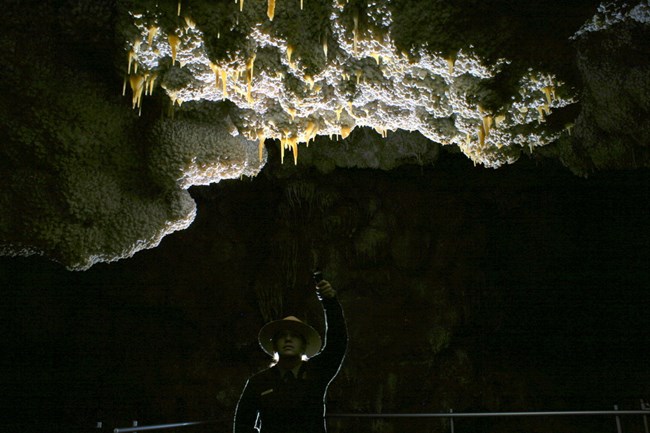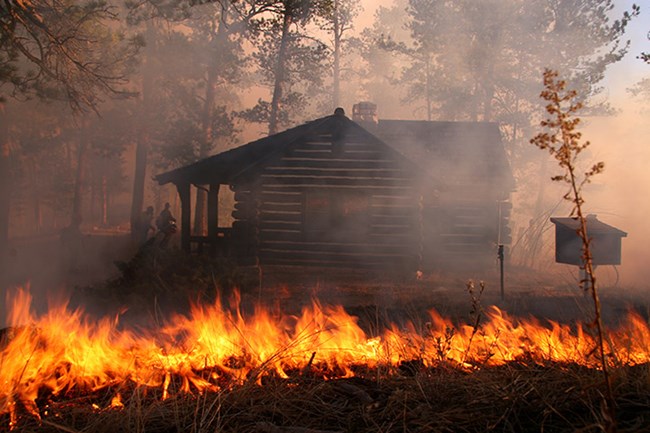
NPS Photo 
NPS Photo It might seem that the cave is isolated from the surface world, and that our activities above the cave would have little or no effect on the cave below. However, that is not entirely true. Wherever moisture from rainfall or snow melt is able to seep underground, a connection is made between the surface and the cave. Jewel Cave National Monument strives to maintain the natural water quality and quantity of water entering the cave, but the infrastructure that has provided opportunities for park visitors (the parking lot, visitor center, restrooms, administrative facilities, etc.) has in some cases changed the natural hydrology. 
NPS Photo The fire opened up the meadows to native plants such as blanket flowers, purple coneflowers, and western wheatgrass. Unfortunately, the fire-disturbed land also encouraged the growth of exotic plants such as common mullein and Canada thistle |
|
|
Last updated: January 10, 2024
